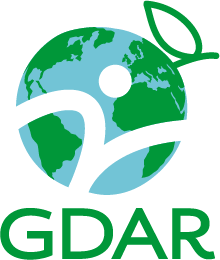Reflections on COP27
 Dr Georgiana Gordon-Strachan is the Director of the Tropical Metabolism Research Unit, at the Caribbean Institute for Health Research, University of the West Indies. Here she reflects on her experience of attending COP27 and her hopes that we might all breathe a little easier.
Dr Georgiana Gordon-Strachan is the Director of the Tropical Metabolism Research Unit, at the Caribbean Institute for Health Research, University of the West Indies. Here she reflects on her experience of attending COP27 and her hopes that we might all breathe a little easier.
I attended the 2022 United Nations Climate Change Conference, more widely know as COP27, as a “Party Overflow” of the Government of Jamaica. This status gave me access to open meetings, but I was not privy to closed negotiations. The negotiators were laser focused on the establishment of a loss and damage response fund. Low and Middle Income Countries (LMICs) and Small Island Developing States (SIDS) were the proponents of this fund, which is needed by those most vulnerable to the impacts of climate change.
While my country delegates were negotiating in closed meetings, I would escape to the WHO Pavilion to catch as many side events as I could. I must confess that being somewhat navigationally challenged, it took me a while to locate the Pavilion: I found myself going in circles for almost a day until eventually I happened upon it. I was immediately impressed with the sculpture that adorned the stage: a pair of lungs, complete with a trachea, bronchus and bronchioles. The sculpture had the fun design feature of giving the feeling of air rushing through the bronchioles when you touched them. This creation gave credence and focus to the importance of air pollution and its global contribution to poor health outcomes. The GDAR contribution to COP27 aligned very well with this focus and was presented at a plenary session aptly called The Power of Movement – Clean Transport for Healthy Cities and Communities.
Tolu Oni’s presentation about the role of GDAR in promoting movement and safe spaces for physical activity was very well received. She spoke of the run leaders all over Africa who were members of the advocacy group Citizens4CleanAir. The audience and the other panel members were impressed with their strategy of using evidence collected during runs. Tolu explained that air quality was measured along running routes by attaching air quality monitors to the runners. The data they collected provided the evidence to advocate for improving air quality and promoting physical activity in their cities. I was pleased to meet some of these young advocates who were excited to speak about their passion to run with the noble mission of advocating for clean air and a healthier life for all.
At the end of COP27, I was happy about the loss and damage response fund that the Jamaican delegation and negotiators from all other countries had spent 18 hours each day negotiating. It was a marathon of reworking texts, preparing positions, strategizing, and coming to consensus with other countries. This landmark agreement was thirty years in the making.
I celebrated with my LMIC and SIDS colleagues knowing fully well that this was just the first step and that there is still a lot of work to be done in developing the framework and architecture of this fund to ensure that it is administered justly and fairly so it reaches the most vulnerable. I left with hope and a deep resolve to re-commit my energy to advocating for reducing the impact of climate change on health.
